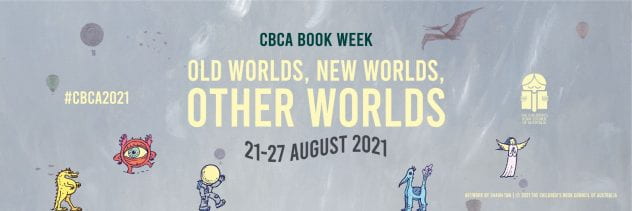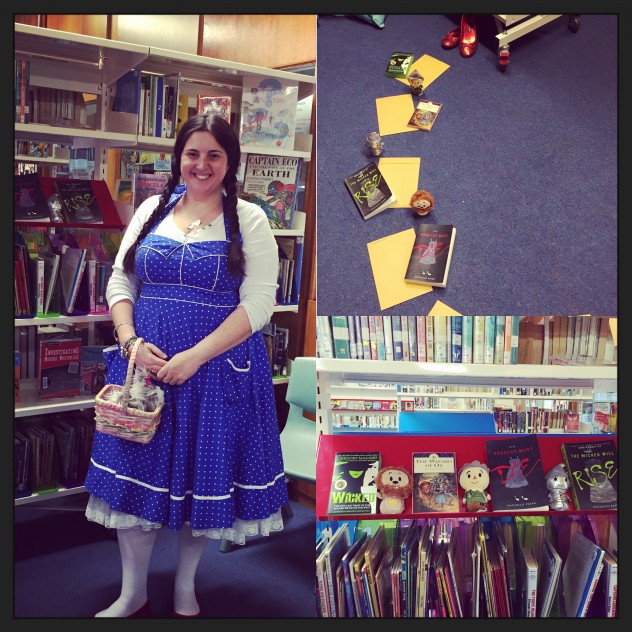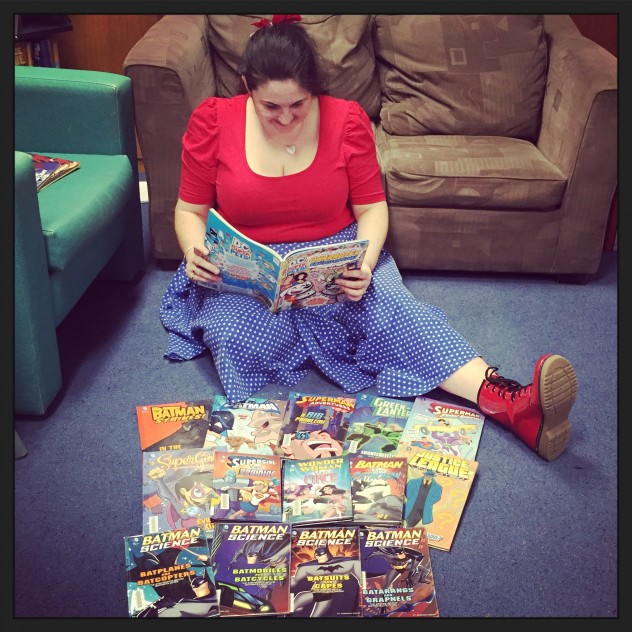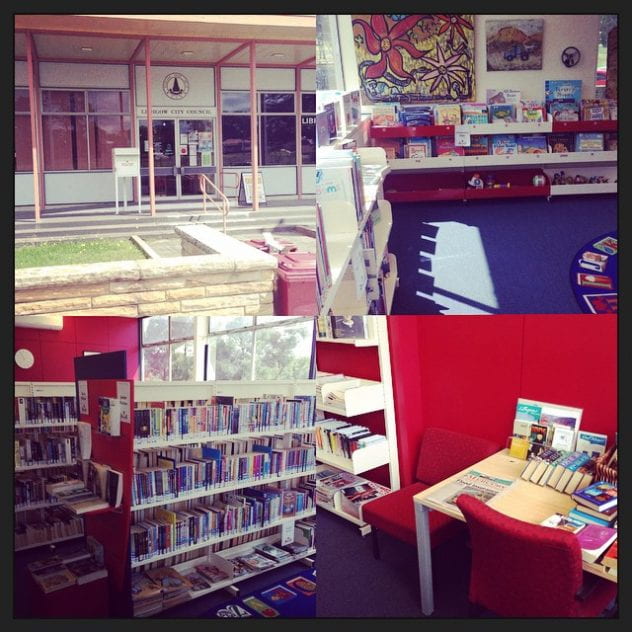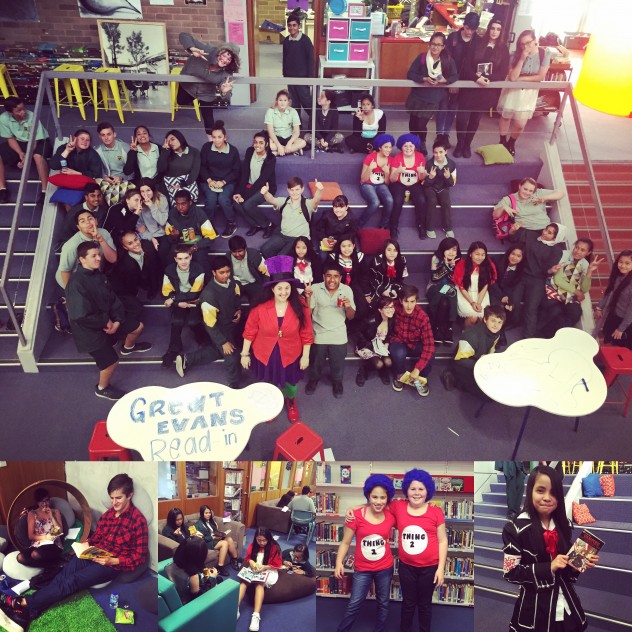Book Week 2021: A story of stories
It’s book week. The 75th year it’s been celebrated in Australia, and the 40th (give or take) that I can remember experiencing. For the second year in a row, here in NSW at least it’s a very different prospect. No book week costume parades at primary schools, no read-ins or teachers dressing up at high schools. Instead, my incredible teacher-librarian colleagues have adapted, and are running a range of lockdown book week activities, including online quizzes, virtual storytimes, and dressups at home. One amazing friend is in an inflatable T-Rex costume, crashing her school’s zoom meetings and causing havoc a-la Michael Crichton’s Jurassic Park (yes, it was a book before we saw it on the big screen!)
For me, it’s another year of not being in a school. I’m mostly ok with this – I love the job I’m doing, and I feel honoured to be able help shape the direction of how students engage with stories. But I do miss school. I miss being surrounded by students, talking about books and helping build a fiction collection that will engage and inspire them. I miss spending my days in a library, working with colleagues to develop teaching and learning activities, and to lead the information literacy plans of the school. But mostly, I miss getting to engage with the multiplicity of stories that surround me in the best space in any school.
Libraries have always been important to me. From the small room at Wallerawang Public School, to the community library in town, to the university libraries I hang out in at every opportunity, and the state libraries I add to the itinerary every time I’m planning a trip, there’s something intensely comforting to me about being surrounded by books. You only have to walk into my house to realise that, with 7 book cases in the lounge room, 2 in my bedroom and another 3 in the study.
I don’t really remember book week dressups when I was in primary school, but I do remember stories always being an important part of my life. From the children’s books that my mum passed down to me, to the stories I discovered for myself, I always found comfort in immersing myself in the lives and adventures on the page. I remember the joy of reading Alice’s Adventures in Wonderland for the first time, and desperately wanting to dive down that rabbithole with her, or skip along the yellow brick road with Dorothy. I remember the wonder of owning my own Golden Book Treasury, a collection of 4 hardcover books with hundreds of stories to escape into. I remember as a teenager seeing myself reflected on the page in the work of Judy Blume, and I recall vividly being seen the first time I read T S Eliot’s The Love Song of J Alfred Prufrock.
This has continued throughout my life. In good times, I can curl up and relax with a good book, going on adventures and exploring other worlds. In difficult times, and boy have their been some of them, I can find comfort, reassurance, hope. I can be reminded, through the experiences of my fictional friends, that difficult things can be overcome. And throughout all of this, I can learn, discover and grow. (I also dress up for book week, just quietly … lots. See below.)
I know that not everyone loves to read like I do. My youngest daughter hasn’t really enjoyed reading since she was in primary school, and I’ve been ok with that. Her relationship with books and stories is her own to figure out. She was finding her passion through other outlets. This year, she’s started reading online fan fictions and has been devouring them, so when she recently mentioned she was caught up on her stories, I offered her a book I thought she’d like. She took it, and over the past week has read it plus another book by the same author, and just sent me a “yay! They arrived!” text after the package of books she requested I send arrived at her share house today. And I don’t expect that everyone SHOULD read like I do. It’s my passion. It’s my joy. It’s my thing. But I do think that everyone can have a connection with stories, and should be able to access their benefits when they need to.
Often, when we talk about the benefits of reading, the tendency is to link it to academic achievement. And there’s good reason for that. People who read generally see improvement in measurable academic outcomes and cognitive skills, such as comprehension, vocabulary, and the ability to make sense of what they see, hear, feel and understand. There are also studies which show that reading helps reduce the impact of age-related cognitive impairments, and has a whole host of other positive impacts physically and neurologically for the reader.
All of this is true. All of this is important. And all of this has shaped my personal, academic and professional pursuits. And yes – the data is important. It should matter that reading is good for you. We should dedicate the time to reading, both in schools and in our personal lives, because it helps students learn and grow. But I think in book week, it’s ok to take some time to focus on the more intangible and immeasurable, but equally important, outcomes. Reading matters because it helps us make sense of who we are. Reading matters because it can carry us through those incredibly difficult times. And I think we can all agree, we’re stuck in the mire of one of those times right now.
So, here’s my wish for you, on Book Week 2021. I wish you a story that will comfort you. I wish you a story that will speak to your soul. I wish you a story that will put a smile on your face, and linger in your mind in the days and weeks after you’ve finished it. If you’re lucky, that’ll all happen in just one story. If you’re luckier still, your wish will be granted many times over, in many stories to come.
Need some ideas? You can check out the 2021 CBCA Book of the Year winners. I particularly love the Younger Readers shortlist this year, and think that any one of them could have been worthy winners – especially Worse Things (so much love for this book!) and Bindi (ditto!). Peta Lyre’s Rating Normal and The Lost Soul Atlas from the older readers shortlist are 2 of my favourite books from this year. You could also check out one of the many books I’ve read this year. My #2021readingchallenge target was 100 books. Last night, I finished my 130th, and I’ve enjoyed pretty much all of them for different reasons. (I know, the last one I posted was 117 – I have some to catch up on posting about!) Or, if you’d like to read something but don’t know where to start, hit me up. I’ve been told I give good book recs. It is, just between you and me, one of the greatest compliments I can be paid!
Happy Book Week, and happy reading,
